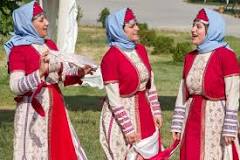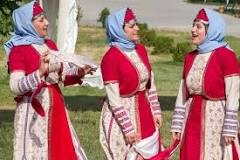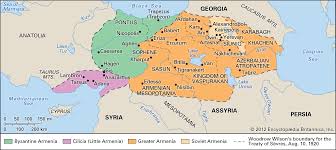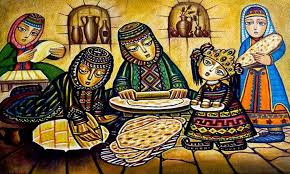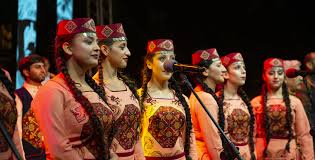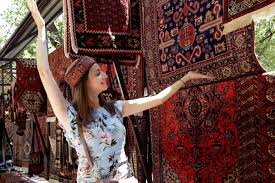
Discover Armenia
The Beauty and Richness of Armenia
Armenia, a country nestled in the Caucasus region between Europe and Asia, is a land of incredible beauty and rich history. From its stunning landscapes to its ancient cultural heritage, Armenia captivates visitors with its charm and authenticity.
Natural Wonders
Armenia boasts a diverse range of natural landscapes, from lush forests to rugged mountains. The majestic Mount Ararat, with its snow-capped peaks, is an iconic symbol of the country. Lake Sevan, one of the largest high-altitude lakes in the world, offers breathtaking views and opportunities for relaxation.
Cultural Heritage
Armenia has a deep-rooted cultural heritage that dates back thousands of years. The country is home to ancient monasteries, such as Tatev Monastery and Geghard Monastery, which stand as testaments to Armenia’s architectural prowess and religious history. Yerevan, the capital city, blends modernity with tradition, featuring bustling markets and historic landmarks.
Culinary Delights
Armenian cuisine is a true reflection of the country’s history and geography. Dishes like dolma (stuffed grape leaves), lavash (flatbread), and khorovats (barbecue) showcase the richness of Armenian flavours. Visitors can indulge in local wines and brandies that have gained international acclaim.
Hospitality and Warmth
One of the defining characteristics of Armenia is the hospitality of its people. Armenians are known for their warmth and generosity towards guests, making visitors feel welcome and at home. Traditional dances, music performances, and festivals offer glimpses into Armenian culture and traditions.
Plan Your Visit
Whether you are drawn to its natural wonders, cultural sites, or culinary delights, Armenia has something for every traveller. Explore this hidden gem in the Caucasus region and immerse yourself in the beauty and richness of Armenia.
Discover Armenia: A Land of Rich Heritage, Natural Beauty, and Warm Hospitality
- Rich cultural heritage spanning millennia
- Stunning natural landscapes, from mountains to lakes
- Warm hospitality and friendliness of the locals
- Delicious and diverse Armenian cuisine
- Historic monasteries and architectural wonders
- Unique traditional music and dance performances
- Affordable travel destination with great value for money
- Safe and welcoming environment for tourists
- Opportunities for outdoor activities like hiking and skiing
Challenges Faced by Visitors to Armenia: Transportation, Language, Weather, Amenities, and Politics
- Limited public transportation options in some areas
- Language barrier for non-Armenian speakers
- Seasonal weather extremes, with hot summers and cold winters
- Some regions may have limited access to modern amenities
- Potential political tensions in the region
Rich cultural heritage spanning millennia
Armenia boasts a rich cultural heritage that spans millennia, making it a treasure trove of history and tradition. From ancient monasteries to intricate architectural wonders, Armenia’s cultural legacy reflects the depth of its historical roots. The country’s art, music, and literature showcase a vibrant tapestry of creativity that has been nurtured over centuries. Visitors to Armenia are immersed in a world where every stone tells a story and every tradition carries the weight of generations past, creating an enriching experience that resonates with the echoes of time.
Stunning natural landscapes, from mountains to lakes
Armenia’s breathtaking natural landscapes, ranging from majestic mountains to serene lakes, showcase the country’s unparalleled beauty. The rugged peaks of Mount Ararat and the tranquil waters of Lake Sevan offer visitors a glimpse into Armenia’s diverse and awe-inspiring geography. Whether exploring the lush forests or admiring the snow-capped summits, Armenia’s picturesque scenery never fails to captivate and inspire all who venture into its stunning surroundings.
Warm hospitality and friendliness of the locals
Travellers to Armenia are often enchanted by the warm hospitality and genuine friendliness of the locals. Armenians have a deep-rooted culture of welcoming guests with open arms, making visitors feel like cherished friends from the moment they arrive. Whether sharing a traditional meal, engaging in heartfelt conversations, or receiving assistance and guidance, the genuine warmth and kindness of the Armenian people create memorable experiences that leave a lasting impression on all who have the pleasure of encountering their hospitality.
Delicious and diverse Armenian cuisine
Armenia is renowned for its delicious and diverse cuisine, offering a culinary experience that delights the senses. From traditional dishes like dolma and lavash to mouth-watering kebabs and sweet treats such as baklava, Armenian cuisine is a true reflection of the country’s rich history and cultural influences. The use of fresh ingredients, aromatic herbs, and unique spices creates a symphony of flavours that captivates food enthusiasts from around the world. Whether enjoying a hearty meal in a local tavern or sampling street food at bustling markets, exploring Armenian cuisine is a journey of discovery and delight for the taste buds.
Historic monasteries and architectural wonders
Armenia boasts a remarkable array of historic monasteries and architectural wonders that showcase the country’s rich cultural heritage. From the intricate carvings of Geghard Monastery to the breathtaking setting of Tatev Monastery perched on a cliff edge, these ancient sites offer a glimpse into Armenia’s past glory and architectural prowess. Each monastery tells a story of faith, resilience, and artistic excellence, making them not just architectural marvels but also spiritual landmarks that have stood the test of time. Whether exploring the intricate details of Khachkars or marvelling at the grandeur of medieval churches, visitors to Armenia are sure to be captivated by the beauty and significance of these historic treasures.
Armenia’s vibrant cultural scene is enriched by its unique traditional music and dance performances. Rooted in centuries-old traditions, Armenian music and dance showcase the country’s rich heritage and artistic expression. From the soul-stirring melodies of duduk, a traditional Armenian woodwind instrument, to the energetic movements of traditional dances like Kochari and Tamzara, these performances captivate audiences with their authenticity and passion. Through music and dance, Armenia preserves its cultural identity and invites others to experience the beauty of its artistic traditions.
Affordable travel destination with great value for money
Armenia stands out as an affordable travel destination that offers exceptional value for money. With its budget-friendly accommodation options, reasonably priced dining experiences featuring delicious local cuisine, and affordable transportation within the country, visitors can explore Armenia without breaking the bank. This makes it an ideal choice for travellers seeking a memorable and cost-effective journey filled with cultural discoveries and scenic adventures.
Safe and welcoming environment for tourists
Armenia offers a safe and welcoming environment for tourists, making it an ideal destination for travellers seeking peace of mind and genuine hospitality. The country’s low crime rates and friendly locals create a sense of security that allows visitors to explore its rich cultural heritage and natural beauty without hesitation. From the bustling streets of Yerevan to the serene countryside, tourists can experience the warmth and generosity of the Armenian people, ensuring a memorable and enjoyable stay in this hospitable nation.
Opportunities for outdoor activities like hiking and skiing
Armenia offers abundant opportunities for outdoor enthusiasts seeking adventure in the midst of stunning natural landscapes. From exhilarating hiking trails that lead to panoramic views of mountains and valleys to world-class skiing resorts with powdery slopes, Armenia caters to those looking to embrace the great outdoors. Whether you are a seasoned hiker or an avid skier, the diverse terrain and favourable climate of Armenia provide the perfect setting for unforgettable outdoor experiences.
Limited public transportation options in some areas
Limited public transportation options in certain areas of Armenia present a challenge for residents and visitors alike. Access to efficient and reliable transportation is essential for mobility and connectivity, yet some regions may lack adequate infrastructure or frequency of services. This limitation can impact daily commutes, access to essential services, and overall convenience for individuals relying on public transport. Addressing this issue could enhance accessibility and improve the quality of life for communities in these underserved areas.
Language barrier for non-Armenian speakers
Travelling in Armenia can present a challenge for non-Armenian speakers due to the prevalent language barrier. Armenian is the official language of the country, and while many Armenians do speak English, especially in urban areas and tourist spots, communication outside these areas can be difficult. This language barrier may hinder seamless interactions with locals, navigating public transportation, or fully understanding cultural nuances. However, with some basic phrases and a willingness to embrace non-verbal communication, visitors can still enjoy all that Armenia has to offer while immersing themselves in a truly authentic experience.
Seasonal weather extremes, with hot summers and cold winters
Armenia’s seasonal weather extremes present a challenge to residents and visitors alike, with scorching hot summers and bitterly cold winters. The contrast between the two seasons can be stark, requiring individuals to adapt to significant temperature fluctuations throughout the year. While the summer sun can be intense, offering opportunities for outdoor activities and exploration, the winter chill brings heavy snowfall and frosty conditions that necessitate careful preparation. Despite these weather challenges, Armenia’s unique climate adds a distinct character to the country’s landscape and contributes to its diverse appeal for those seeking both summer warmth and winter wonderland experiences.
Some regions may have limited access to modern amenities
In certain regions of Armenia, limited access to modern amenities can pose a challenge for residents and visitors alike. While major cities like Yerevan may offer a range of facilities and services, more remote areas could experience constraints in terms of infrastructure, technology, and conveniences. This disparity in access to modern amenities highlights the need for continued development and investment to ensure that all regions of Armenia can benefit from essential resources and services for a better quality of life.
Potential political tensions in the region
Armenia faces the con of potential political tensions in the region, stemming from its complex geopolitical landscape and historical conflicts. The country’s proximity to various contentious borders and ongoing disputes can lead to instability and uncertainty. These political tensions pose challenges for Armenia’s development and can impact both domestic affairs and international relations. Navigating this delicate balance requires diplomatic finesse and a proactive approach to promoting peace and stability in the region.


